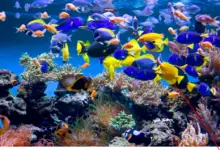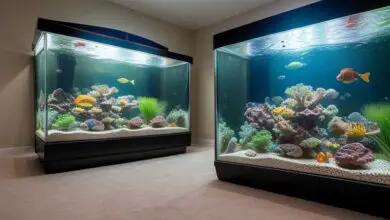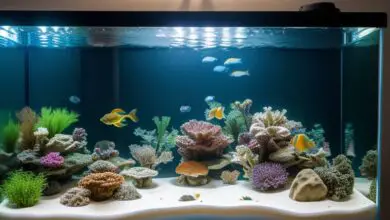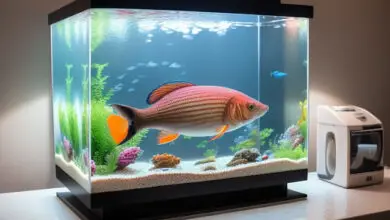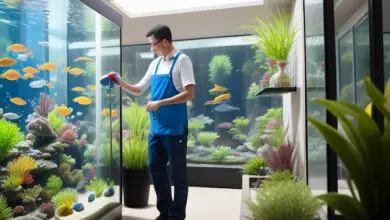Natural Ways To Keep Your Aquarium Water Crystal Clear

Having clean, healthy water is essential for fish and other aquarium inhabitants. Mechanical filters like filter cartridges are commonly used to remove waste and debris, but these create plastic waste over time. There are more eco-friendly filtration options that can effectively clarify water. Natural methods rely on biological processes, plants, and sustainable materials to filter impurities from the water column.
Introducing Natural Aquarium Filtration
Traditional aquarium filters use materials like filter floss, activated carbon, and specialized chemical media to trap particles and absorb dissolved compounds from the water. This helps remove waste from the tank, but the cartridges require frequent replacement and disposal/recycling.
There are alternative filtration solutions that take advantage of natural biological, chemical and mechanical processes to remove impurities without relying on disposable cartridges. These eco-friendly systems cultivate beneficial bacteria, leverage aquatic plants, employ renewable filter materials, and harness water movement to clarify water the natural way.
Sponge Filters – Simple Biological Filtration
Sponge filters are a popular kind of biological filter for aquariums. They consist of an air-powered uplift tube and a porous sponge material that serves as a surface for beneficial nitrifying bacteria to grow.
How they work: An air pump supplies the sponge filter with a steady stream of air bubbles. As the bubbles rise up through the uplift tube, they pull water through the sponge. This gentle water movement allows bacteria on the sponge surface to capture and break down fish waste and uneaten food.
Types of sponge filters: Sponge filters come in a variety of shapes and sizes. Common types include corner filters, cascading sponge filters, and cylindrical hang-on models. They can be combined with other filtration to enhance biological breakdown of aquarium waste.
Setting them up: Sponge filters are very easy to install and maintain. They simply require an air pump and airline tubing connected to the uplift tube. Many models allow adjustment of airflow to customize filtration rate. The sponges only need occasional rinsing in old tank water to clear trapped debris. Avoid sterilizing treatments, as these will kill the beneficial bacteria.
Fluidized Bed Filters – Efficient Mechanical Cleaning
Fluidized bed filters use a water pump to lift and tumble filter media, creating a suspended bed that traps particles extremely effectively.
How fluidized beds work: As water enters the filter chamber, it flows upward through a layered bed of sand and other dense media. This countercurrent flow suspends and mixes the media, allowing lots of contact between particles in the water and the filter grains. The abrasive tumbling action causes small debris to stick to the filter media while dissolved wastes get absorbed.
Setting them up: Fluidized filters require a water pump rated for the size of the filtration unit. Air pumps may also be incorporated to improve bed fluidization. Layering the media correctly is key to achieving good flow patterns. Typically larger grains like sand and gravel go at the bottom, followed by finer particles towards the top.
Maintenance: The abrasion of particles causes some attrition of the filter media over time. Flushing the unit and replacing a portion of media monthly helps maintain filtration efficiency. Cleaned media can be reused indefinitely.
Moving Bed Biofilters – Biological Powerhouses
Moving bed bioreactors (MBBRs) harness masses of tiny plastic pieces to host huge bacterial populations that break down aquarium waste.
How MBBRs work: The small plastic media in MBBR units provide tons more surface area than sponges or stones for beneficial bacteria to adhere to. Water movement tumbles the media constantly, bringing bacteria into contact with contaminants flowing through the filter. The robust bacterial cultures that develop are very effective at biological filtration.
Media options: MBBRs use media ranging from tiny floating plastic pieces to larger porous elements that resemble volcanic rock or wood roots. The ideal media balances lots of protected surface area and pore spaces with minimal clogging risk. Common plastics used include polyethylene, polypropylene, and polyurethane.
Operating conditions: Getting regular cleanings and maintaining well-oxygenated, nutrient-rich conditions is key for the bacteria living on the media. Periodically agitating the reactor bed helps prevent compaction and zones of poor flow. Supplementing with additional biofiltration like live plants can support peak nitrification activity.
Algae Scrubber Filters – Let Algae Clarify Your Water
Algae turf scrubbers (ATS) filter aquarium water using fast-growing algae that removes nutrients and pollutants.
How ATS units work: In these filters, water circulates over screens or molded plastic media that cultivated algae grows on. The algae takes up ammonia, nitrates, phosphates, and other compounds as it photosynthesizes. Grow lights stimulate rapid algae productivity. Trimming and harvesting algae then exports excess nutrients from the tank.
Set up considerations: ATS units require high flow rates and bright lighting to grow the algae. Allowing thin films to form avoids clogging issues.including foam fractionation helps remove fine particulate that could smother growths. Monthly prune and cleanup maintains active filtration.
Ideal systems: Small desktop ATS units with grow lights and adjustable flows suites most home aquarium needs. Pairing with some biofiltration and live plants helps process any excess nutrients. For planted tanks, target slower-growing strains tolerant of lower light and nutrients.
Planted Aquarium Refugiums – Let Plants Polish Your Water
Refugiums are supplementary filtration chambers connected to the main tank where fast-growing plants can thrive.
How refugiums work: Aquarium water is continuously pumped into a refugium for plants to uptake ammonia, nitrates, phosphates and other byproducts. Plant growth fostered by the protected space exports excess nutrients. Beneficial bacteria supplemented by lots of oxygenated plant root growths also develops.
Ideal vegetation: Floating/emersed aquatic plants like frogbit, lucky bamboo, pothos, or hyacinths are common refugium choices, as are fast-growers like guppy grass and hornwort. Mixing in some microfauna like snails or shrimp helps break down debris.
Operating conditions: Moderate lighting, heating matched to inhabitants, and water movement for gas exchange keeps the biome productive. Periodic thinnings help regulate growth, provide plant fertilizer, or remove some nutrients entirely.
Supplemental Aeration – Dissolved Oxygen Boost
Adding extra aeration using air pumps and diffusers raises oxygen levels available to bacteria and organisms at work in the aquarium filtration.
Benefits of added oxygenation: Aerating water beyond whatfilters distribute alone helps biological filters nitrify more efficiently. Oxygen ensures chemical processes work optimally and keeps inhabitants healthy. Many plants also appreciategood gas exchange.
Types of aquarium air supplies: Air pumps are available in sizes suited for all home aquariums. Many feature pressure adjustment to fine tune airflow. Pore air stones, wands, and loops provide excellent diffusion into the water column right within tank, or aeration can be directed into filters specifically.
Getting air where needed: Positioning diffusers close to areas of biological filtration and within planted zones ensures supplementary oxygen gets put to good use. Extended aeration sessions can be programmed in around main tank lights-off periods when photosynthesis halts.
Minimizing Mechanical Media
Combining natural filtration techniques allows reducing or even eliminating disposable mechanical media like filter floss/pads.
Evaluating mechanical needs: As supplementary plant and algae growths mature and bacterial biofiltersbecome fully cycled, less particulate makes it far into water column for filters to trap. Assessing flow rates, observing inhabitants, and monitoring water conditions over time helps determine if/when reducing mechanical filtration is feasible.
Alternatives to filter cartridges: Where additional mechanical trapping is still helpful, sustainable alternatives like filter sponges, bags filled with lava rock or other reusable porous media, and micron socks offer reusable options. Some also serve as attachments sites for beneficial bacteria.
Slower flow rates feasible: Heavily planted tanks and ones housing only species tolerant of some particulate often thrive with gentle water movement and minimal mechanical trapping. Positioning spray bars and outlets to maximize circulation helps ensure fish, inverts and corals get refreshed while minimizing mechanical filtration needs.
Conclusion
The aquarium hobby offers so many opportunities to learn from and interact with nature right at home. Small steps like adding a versatile sponge filter, an air stone, or easy-care floating plants can kickstart your own journey cultivating a thriving balanced ecosystem powered by natural processes rather than consumer products.

